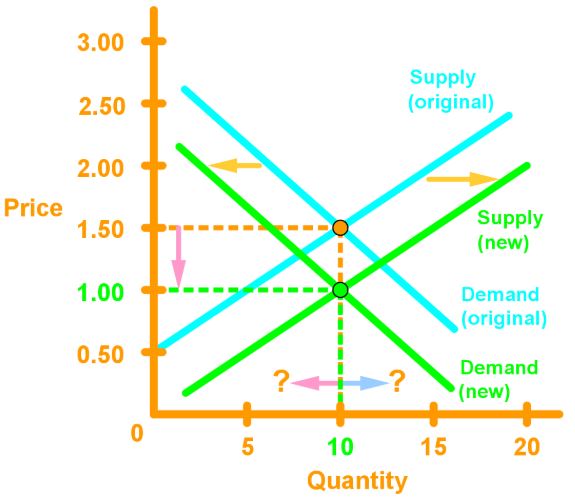Changes in either demand or supply can change the equilibrium price and quantity. Let’s explore the different changes that can happen in demand and supply, and see how the equilibrium price and quantity changes.
Changes in Demand
Case 1: Demand increases
In this case, the demand curve shifts rightward, and there will be in a new intersection. At the new intersection, we see that the equilibrium price and quantity have both increased.
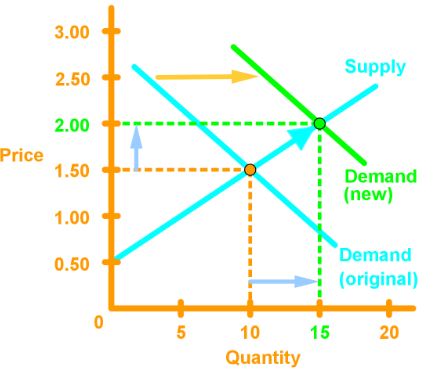
Case 2: Demand decreases
In this case, the demand curve shifts leftward. At the new intersection, we see that the equilibrium price and quantity have both decreased.
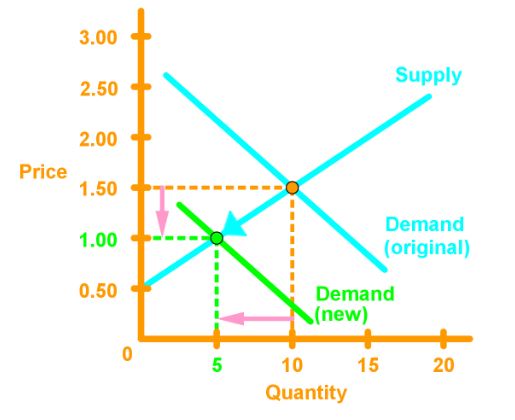
Changes in Supply
Case 1: Supply increases
In this case, the supply curve shifts rightward. At the new intersection, we see that the equilibrium price has decreased, and the equilibrium price has increased.

Case 2: Supply decreases
In this case, the supply curve shifts leftward. At the new intersection, we see that the equilibrium price has increased, but the equilibrium price has decreased.

Changes in Both Demand and Supply
Case 1: Both Demand and supply increases
In this case, both the demand and supply curve shift rightward. At the new intersection, we will see that the equilibrium price is uncertain (depends on the magnitude of the changes), but the equilibrium quantity has increased.
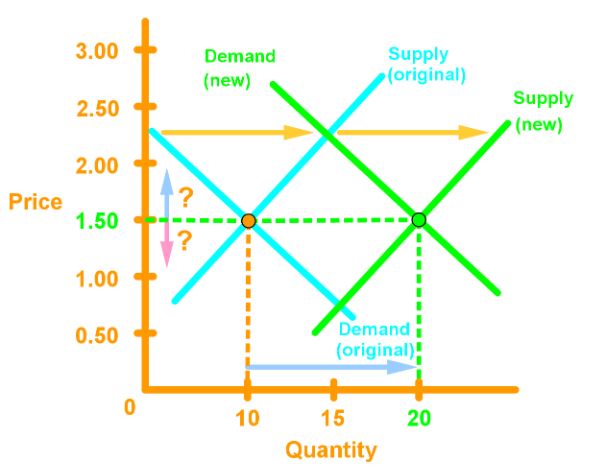
Case 2: Both Demand and supply decreases
In this case, both the demand and supply curve shift leftward. At the new intersection, we see that the equilibrium price is uncertain (depends on the magnitude of the changes), but the equilibrium quantity has decreased.
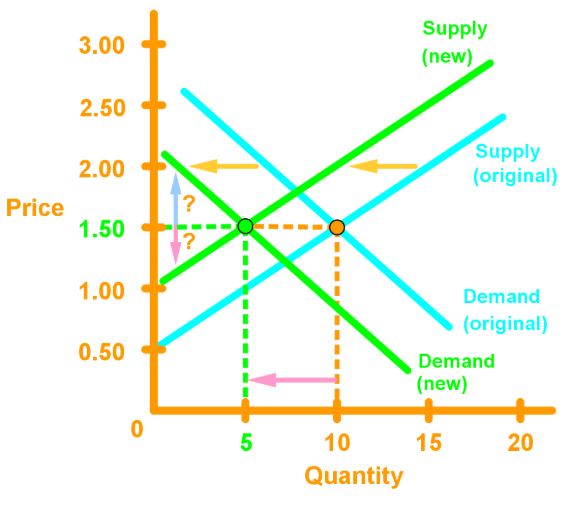
Case 3: Demand increases and supply decreases
In this case, the demand curve shifts rightward, but the supply curve shifts leftward. At the new intersection, we see that the equilibrium price increases, but the changes in equilibrium quantity is uncertain (depends on the magnitude of the changes).
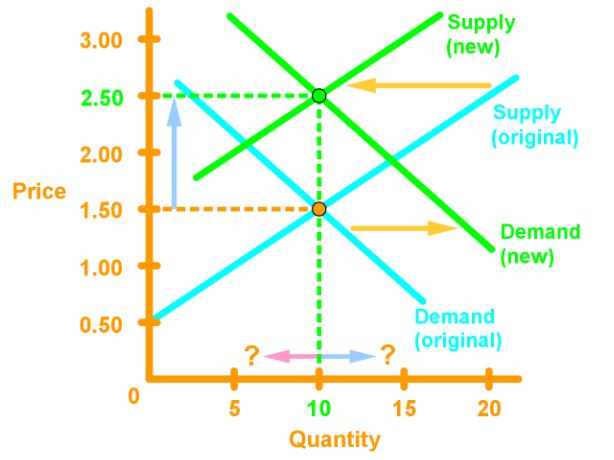
Case 4: Demand decrease and supply increases
In this case, the demand curve shifts leftward, but the supply curve shifts rightward. At the new intersection, we see that the equilibrium price decreases, but the changes in equilibrium quantity is uncertain (depends on the magnitude of the changes).
